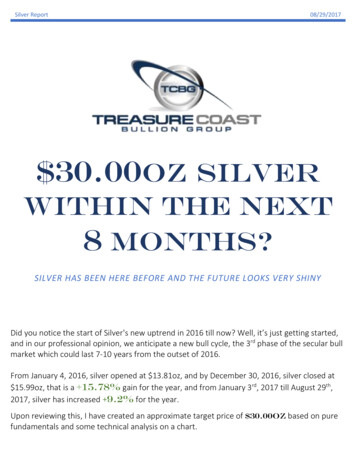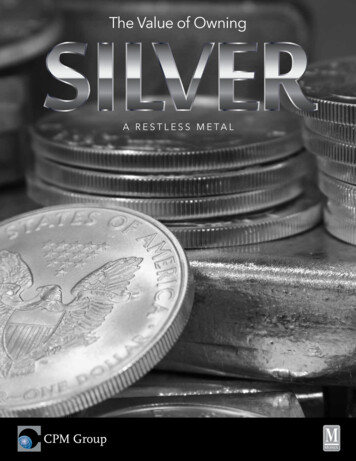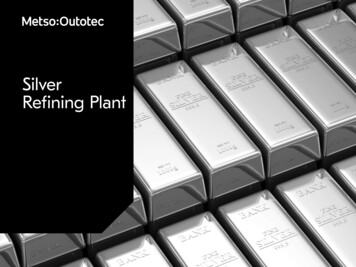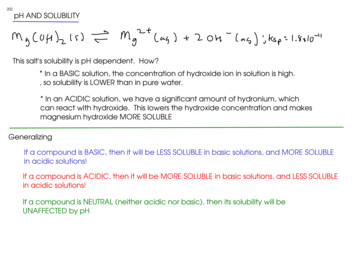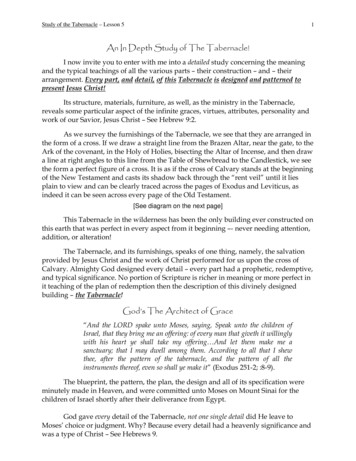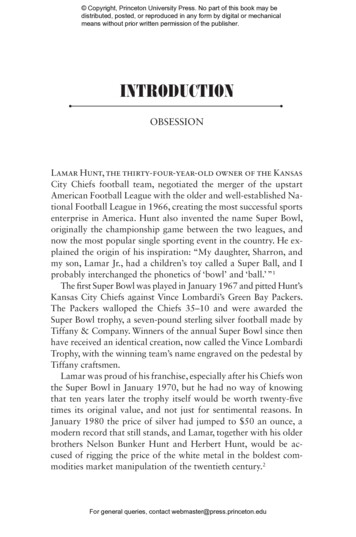
Transcription
Copyright, Princeton University Press. No part of this book may bedistributed, posted, or reproduced in any form by digital or mechanicalmeans without prior written permission of the publisher.INTRODUCTIONOBSESSIONLamar Hunt, the thirty- four- year- old owner of the KansasCity Chiefs football team, negotiated the merger of the upstartAmerican Football League with the older and well- established National Football League in 1966, creating the most successful sportsenterprise in America. Hunt also invented the name Super Bowl,originally the championship game between the two leagues, andnow the most popular single sporting event in the country. He explained the origin of his inspiration: “My daughter, Sharron, andmy son, Lamar Jr., had a children’s toy called a Super Ball, and Iprobably interchanged the phonetics of ‘bowl’ and ‘ball.’ ”1The first Super Bowl was played in January 1967 and pitted Hunt’sKansas City Chiefs against Vince Lombardi’s Green Bay Packers.The Packers walloped the Chiefs 35– 10 and were awarded theSuper Bowl trophy, a seven- pound sterling silver football made byTiffany & Company. Winners of the annual Super Bowl since thenhave received an identical creation, now called the Vince LombardiTrophy, with the winning team’s name engraved on the pedestal byTiffany craftsmen.Lamar was proud of his franchise, especially after his Chiefs wonthe Super Bowl in January 1970, but he had no way of knowingthat ten years later the trophy itself would be worth twenty- fivetimes its original value, and not just for sentimental reasons. InJanuary 1980 the price of silver had jumped to 50 an ounce, amodern record that still stands, and Lamar, together with his olderbrothers Nelson Bunker Hunt and Herbert Hunt, would be accused of rigging the price of the white metal in the boldest commodities market manipulation of the twentieth century.2For general queries, contact webmaster@press.princeton.edu
Copyright, Princeton University Press. No part of this book may bedistributed, posted, or reproduced in any form by digital or mechanicalmeans without prior written permission of the publisher.2 IntroductionLamar, Nelson Bunker, and Herbert were sons of H.L. Hunt,a poker- playing oil tycoon whose right- wing political outlookequated New York’s liberal Republican governor, Nelson Rocke feller, with Cuba’s Fidel Castro. The family patriarch taught hischildren to distrust government, especially its paper currency, andto invest in real things, such as oil, land, and precious metals. Heestablished trusts for his children, including shares in the family’sbillion- dollar crown jewel, the Placid Oil Company, which servedas a funding source for their business ventures. The tall and trimLamar, as mild mannered as an accountant, concentrated on football during the 1960s, while his outspoken older brother Bunker,as Nelson was called, concentrated on racehorses and oil fields.Bunker was a pear- shaped 250- pounder who enjoyed the limelightthat came with being the family spokesman. A speculator like hisfather, Bunker may have been the richest man in the world after oilwas discovered in Libya, where he owned the drilling rights. Bunkerhad made his deal with Libya’s King Idris, but before he could en joy all the fruits of his speculations, insurgents led by MuammarQaddafi overthrew the monarchy in 1969 and soon after nationalized the oil fields. Bunker was still a billionaire, when a billiondollars was real money, but the incident increased his distrust ofgovernment.Bunker affirmed his conservative credentials by joining the JohnBirch Society, the Tea Party of its day, and began investing in silverbecause he feared government spending would produce inflationand erode the value of the U.S. dollar.3 He also thought he couldstore his cache of the precious metal on his two- thousand- acre Cir cle T ranch near Dallas without worrying about Qaddafi. But hisspeculation quickly turned into an obsession, and even Texas wasnot big enough for his holdings. Between 1973 and 1979 he led hisbrothers in accumulating almost 200 million ounces of the whitemetal, stored in New York, London, Switzerland, and other locations that may not have been publicly disclosed. The Hunt silverwas worth about 2 billion in September 1979. Four months later,when silver hit 50 an ounce, it came to nearly 10 billion.Then it all disappeared. Within a year Bunker Hunt was forcedto pledge his shares in Placid Oil as collateral for a billion- dollarFor general queries, contact webmaster@press.princeton.edu
Copyright, Princeton University Press. No part of this book may bedistributed, posted, or reproduced in any form by digital or mechanicalmeans without prior written permission of the publisher.Obsession 3loan to avoid bankruptcy. He had personally borrowed heavily tobuy silver and the value of his leveraged holdings collapsed whenprices fell back to 10 an ounce, a drop that rivaled the decline inthe Dow Jones stock index during the Great Depression. He andhis brothers were then found liable for conspiring with Saudi Arabian sheikhs to corner the silver market during their speculativebinge. Bunker Hunt declared personal bankruptcy after the trialand lost prized possessions to his creditors, including fifteen ancient Greek vases and a collection of silver coins dating from theRoman Empire.4 When an older sister asked what had happened,he answered, “I was just trying to make some money.”5The Hunts were not the first nor the last to be seduced by thewhite metal. In 1997 Warren Buffett, perhaps the most successful investor of the past fifty years, bought more than 100 millionounces, almost as much as the Hunts, and drove the price of silverto a ten- year peak. In 1933 Franklin Delano Roosevelt raised theprice for silver at the U.S. Treasury to mollify senators from western mining states while ignoring the help it gave Japan in subjugating China. And in 1918 Senator Key Pittman of Nevada subsidizedhis home state constituents by sponsoring legislation to sell silverto India during the Great War. But the white metal has been morethan just a vehicle for personal advancement to Americans; it hasbeen part of the country’s monetary system since the founding ofthe Republic and is woven into the fabric of history like the starsand stripes.Perhaps the most famous speech in American electoral politics,Nebraska Congressman William Jennings Bryan’s “Cross of Gold”sermon at the 1896 Democratic convention, was all about silver.Bryan became the party’s nominee for president after delivering anaddress that would make a modern televangelist blush: “I come tospeak to you in defense of a cause as holy as the cause of liberty— the cause of humanity . . . that all believers in free coinage of silverin the Democratic Party should organize and take charge of andcontrol the policy of the Democratic Party . . . We do not come asaggressors. Our war is not a war of conquest. We are fighting in thedefense of our homes, our families, and posterity.”6 Bryan’s cause,the resurrection of silver as a monetary metal, aimed to rectify theFor general queries, contact webmaster@press.princeton.edu
Copyright, Princeton University Press. No part of this book may bedistributed, posted, or reproduced in any form by digital or mechanicalmeans without prior written permission of the publisher.4 Introductioninjustice perpetrated by the Crime of 1873, which discontinuedthe coinage of silver dollars that Congress authorized in 1792 andestablished gold as king of American finance. The demonetizationof silver sparked a great deflation in the United States during thelast quarter of the nineteenth century, with declining agriculturalprices provoking resentment among midwestern farmers againstEast Coast bankers. The Wonderful Wizard of Oz, which has enter tained millions since it was published in 1900, is an allegory of thecontemporary class warfare.The abundance of silver in America during the 1870s made itthe metal of the people, synonymous with cheap money comparedwith the more restrictive supply of currency under the gold standard. Bryan viewed remonetizing the white metal as a way to promote inflation to reduce the burden of mortgages owed by farmersto the banks. A century later, during the 1970s, the Hunts investedin silver as a bulwark against inflation, a rock- hard asset to protecttheir fortune against the spendthrift ways of the government. Thisis the story of silver’s transformation from soft money during thenineteenth century to hard asset today, and how manipulations ofthe white metal have altered the modern world; but to understandthe attraction of silver to politicians and its vulnerability to speculators and schemers requires historical perspective.Silver is the preferred protection against government defaults,political instability, and inflation for people in most countries, aplace to hide when conventional investments sour. In the three yearsfollowing the financial crisis of 2008, when banks teetered on thebrink of insolvency and the government debts of Italy, Ireland, andGreece resembled junk bonds, anxious investors drove up the priceof silver by almost 400%, an increase greater than ten years ofWarren Buffet’s Berkshire Hathaway stock.7 But the precious metalis more than just another safe- haven investment. For centuries ithas been hammered by silversmiths into serving platters, candlesticks, and wine goblets for the upper classes. Families display theseheirlooms with pride in their dining room cupboards to highlightan affluent past, but during bad times they are quietly sold for cash.Silver has also been the monetary standard of almost every country in the world, including China and Saudi Arabia in the twentiethFor general queries, contact webmaster@press.princeton.edu
Copyright, Princeton University Press. No part of this book may bedistributed, posted, or reproduced in any form by digital or mechanicalmeans without prior written permission of the publisher.Obsession 5century, Great Britain in the seventeenth, and Biblical Egypt. Britaindominated world commerce with the gold standard during the nineteenth century, but its currency is still called “the pound sterling,”a paradoxical reference to sterling silver as the standard. The word“sterling” means that a coin, candelabra, or Super Bowl trophy contains 92.5% pure silver, with the remaining 7.5% usually consistingof copper for strength. A mixture of nitric acid and potassium dichromate produces a different color on a sample scraping of “fine”silver, which is 99.9% pure, compared with sterling, and there is littleto dispute once the sample has been assayed (tested) professionally.8Governments guarantee the purity and weight of coins minted fromprecious metals to make the currency generally accepted withoutfurther testing, and silversmiths engrave 925 or the word sterlingon their work to certify its quality. Queen Elizabeth I, daughter ofHenry VIII and Anne Boleyn, ascended the throne in 1558 and twoyears later made the metal backing the British currency one poundof sterling silver.9 This so- called “ancient right standard of England”originated in the eleventh century under William the Conqueror, buthad been debased by the gluttonous Henry before Elizabeth’s rescue.10 The sterling reference stuck despite Britain’s switch to goldand survives today even though the silver content of the pound islong gone.The clash between ornamental demands by silversmiths and gov ernment coinage often had surprising consequences. Louis XIV, theabsolute monarch of France for seventy years until his death in 1715,turned the magnificent silver furniture and tableware in the Palaceof Versailles into bullion bars for minting by his Treasury.11 Silverdishes with matching place settings became common currency. Theremaining French nobility had little choice but to follow the king’sexample— Louis is famous for the proclamation, “L’État, c’est moi”(I am the state). The results were fiscal credibility in France and ascarcity value in the surviving silver antiques.Governments no longer coin silver as currency but rising indus trial demands compete with silversmiths for the available supplyof the white metal. Photographic film produced by the cameracompany Eastman Kodak usually consumed more silver in a yearthan the jewelry industry.12 Now that digital cameras have madeFor general queries, contact webmaster@press.princeton.edu
Copyright, Princeton University Press. No part of this book may bedistributed, posted, or reproduced in any form by digital or mechanicalmeans without prior written permission of the publisher.6 Introductionphotographic film obsolete (driving Kodak into bankruptcy in2012), the electronics industry dominates commercial uses. Silver,called a noble metal, along with gold and platinum, because itresists corrosion, is the best conductor of electricity and is used incircuit breakers, switches, fuses, and other electrical components.Modern technology has also exploited silver’s antibacterial properties. In 2006 the giant Korean manufacturer Samsung introduced awashing machine that releases silver ions in the wash cycle to helpsanitize the laundry.13 Specialty retailer Sharper Image advertiseda plastic food container infused with silver nanoparticles to keepfood fresher, which received positive feedback on Amazon fromusers.14 And in 2017 Colgate University in central New York statesprayed its locker rooms with a decontaminating fog of hydrogenperoxide and silver to combat the deadly MRSA staph infection.15The white metal’s industrial demand now exceeds its combineduse in jewelry, bullion bars, and commemorative coins.16Silver attracts manipulators because occasional bursts of speculative fever clash with rising commercial use, especially when citizens fear political unrest. The resulting price gyrations allow conspirators to promote higher prices with relatively little effort whilealso camouflaging their manipulation. On November 4, 1979, during the height of the alleged Hunt conspiracy to corner the silvermarket, Iranian students invaded the U.S. embassy and took American citizens hostage.17 The ensuing political crisis contributed tothe tripling of silver prices during the next three months, maskingthe footprints of the manipulators.18Gold is the primary store of value for those who mistrust thegovernment, but silver remains the refuge of choice for most peo plebecause it is cheaper and more accessible. A standard 100- ouncebar of silver, about the size of three Hershey bars stacked on topof each other, costs about 1,700 today compared with a priceof 130,000 for a 100- ounce gold bar. The relatively small dollarsize of the silver market makes the white metal more volatile thanthe yellow, where a million- dollar order from anxious buyers andsellers makes a bigger impact.19 Silver led the jump in preciousmetals after the 2008 financial crisis with nearly a 400% increasecompared with almost 250% for gold.20For general queries, contact webmaster@press.princeton.edu
Copyright, Princeton University Press. No part of this book may bedistributed, posted, or reproduced in any form by digital or mechanicalmeans without prior written permission of the publisher.Obsession 7For most of recorded history paper currency was acceptable ineveryday transactions because governments promised to exchangethose pieces of paper for gold or silver, which gave money intrinsic value. U.S. citizens could exchange dollars for gold at the rateof 20.67 per ounce at the U.S. Treasury until 1933, and foreigngovernments could do the same at 35.00 per ounce between 1934and 1971. President Nixon suspended the Treasury’s gold obligations on August 15, 1971, ending the last connection between thedollar and precious metals.All countries now issue fiat currency, paper money backed onlyby the creditworthiness of the government. The verdict remains un certain on this relatively new worldwide experiment in pure papercurrency because governments have often abused their right toprint money, destroying its value, as in the 1920s hyperinflation inGermany.21 Those concerned that the experiment will fail, such asthe Hunts in the 1970s and the Tea Party today, seek refuge in theageless storehouses of gold or silver. The great English economistDavid Ricardo, who learned a lot about money as a successful speculator, wrote almost two hundred years ago, “Experience, however,shows that neither a State nor a Bank ever have had the unrestrictedpower of issuing paper money, without abusing that power.”22 Ricardo recommended that “the issue of paper money ought to beunder some check and control; and none seems so proper for thatpurpose as that of subjecting the issuers of paper money to theobligation of paying their notes, either in gold [or silver] coin orbullion.”23 Anchoring currencies to precious metals promoted pricestability but caused controversy as well.The United States, at the urging of Secretary of the TreasuryAlexander Hamilton, established the silver dollar alongside goldin 1792 as America’s currency. The two metals vied for public attention under this bimetallic standard until Congress passed theCoinage Act of 1873, eliminating the official status of silver andmaking gold the sole backing of America’s money.24 The scarcityof the yellow metal caused widespread price deflation over thenext twenty- five years, and the reduced government demand forsilver contributed to its decline in value of more than 50%.25 Thesubsequent outcry in western mining states for Congress “to doFor general queries, contact webmaster@press.princeton.edu
Copyright, Princeton University Press. No part of this book may bedistributed, posted, or reproduced in any form by digital or mechanicalmeans without prior written permission of the publisher.8 Introductionsomething for silver” made headlines throughout the country.26William Jennings Bryan rode a silver train of resentment to the1896 Democratic nomination for the presidency that ended in hisdefeat by William McKinley. Bryan ran twice more for the WhiteHouse and lost, but none of those setbacks muffled the agitationfor silver, which continued well into the twentieth century.During the Great Depression, after the price of silver hit a recordlow of 24 an ounce, Democratic Senator Key Pittman of Nevada,the powerful chairman of the Senate Foreign Relations Committee,urged President Roosevelt to restore the white metal’s full monetarystatus.27 In exchange, Pittman promised the support of fourteensenators from western mining states for Roosevelt’s controversialNew Deal legislation. FDR responded with a series of purchase programs for silver, beginning with an executive order on December 21,1933, directing the U.S. Treasury to buy the domestically producedmetal at 64.5 an ounce, a premium of 50% above the free marketprice of 43 .28 The subsidy and the doubling of silver prices duringRoosevelt’s first administration gave “the silver miners and speculators much for which to be thankful,” according to contemporaryfinancial observers.29 Senator Pittman agreed and described FDR’sbenevolence as a “Christmas present.”30Pittman made good on his promise. He delivered the “silver bloc”senators in support of FDR’s 1933 pump- priming legislation, help ing to jump- start the domestic economy, but U.S. diplomacy suffereda major blow. The higher price paid by the Treasury attracted silverfrom the rest of the world, especially from China, whose currencywas backed by the precious metal. Despite local laws restrictingexports, speculators smuggled silver out of Shanghai to profit onworld markets and ultimately forced China to abandon the silverstandard when that country was most vulnerable.31 It was 1935and China, led by American ally Chiang Kai- shek, faced an internal threat from Mao Tse- tung’s communist insurgents and an external threat from Imperial Japan. Roosevelt’s Treasury secretary,Henry Morgenthau, worried that China’s insecure government,weak economy, and susceptibility to Japanese aggression made herespecially vulnerable to the dislocations arising from American silver policy.32For general queries, contact webmaster@press.princeton.edu
Copyright, Princeton University Press. No part of this book may bedistributed, posted, or reproduced in any form by digital or mechanicalmeans without prior written permission of the publisher.Obsession 9Morgenthau was right to worry. Roosevelt’s pro- silver programto please western senators helped the Japanese military subjugate aweakened China and boosted Japan’s march towards World War II,demonstrating the danger of formulating domestic policy withoutconsidering international consequences. Was FDR’s price manipulation less criminal than Nelson Bunker Hunt’s? Reading this bookwill let you make an informed judgment.For general queries, contact webmaster@press.princeton.edu
years later made the metal backing the British currency one pound of sterling silver. 9 This so- called "ancient right standard of England" originated in the eleventh century under William the Conqueror, but had been debased by the gluttonous Henry before Elizabeth's res-cue.10 The sterling reference stuck despite Britain's switch to gold




